Question: What do these two men have in common? Answer: They both made printing history. But first, a look at Mainz, Germany.
Our guide began by telling us that Germans are taught to be punctual. In fact, there’s a saying they use for guidance: Early is on time; on time is late; late is left. These guidelines are then fine-tuned. For example, ten minutes early is perfect; thirty minutes early is too much. There’s nothing productive you or the people you’re meeting can do with an extra thirty minutes, so it’s time wasted. Our guide was time-precise as well. She announced that we would walk for twelve minutes and then she would speak for four-and-a-half minutes. As one man near me remarked, “The French trains are faster, but the German trains run on time.” And so, we promptly set off on our city tour.
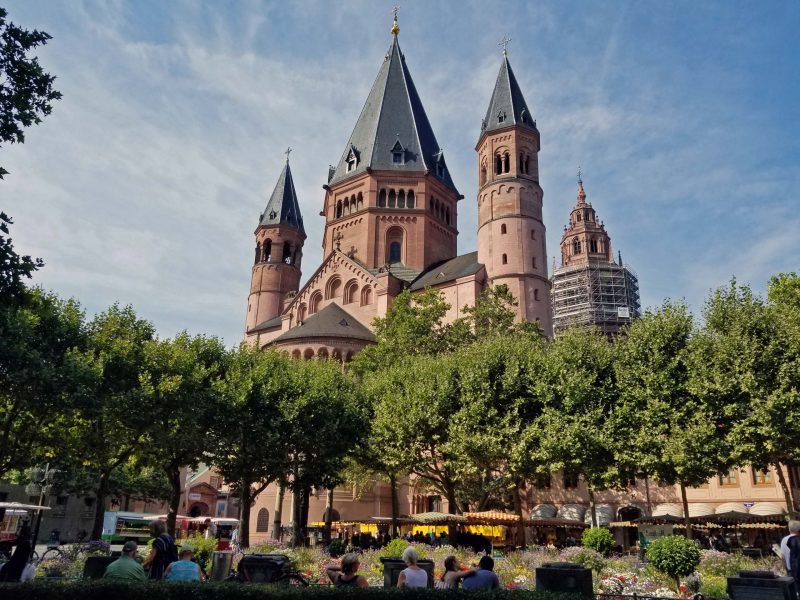
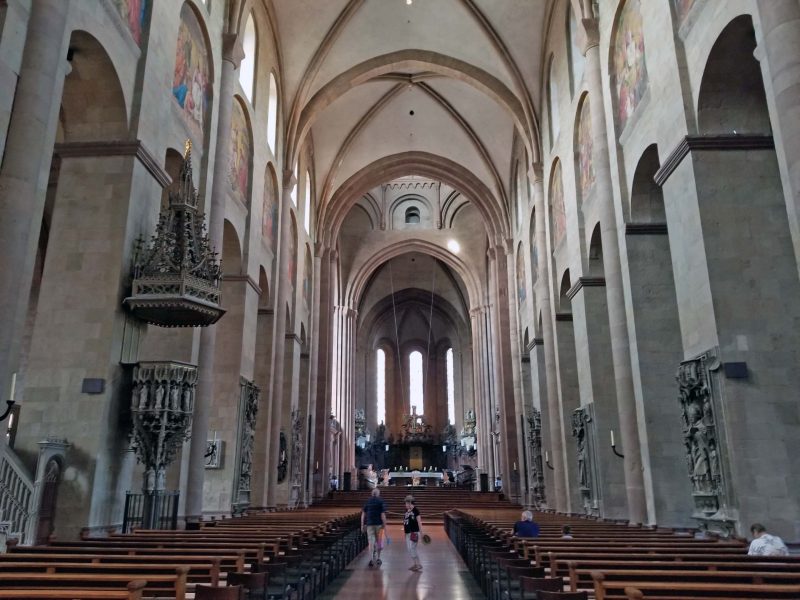
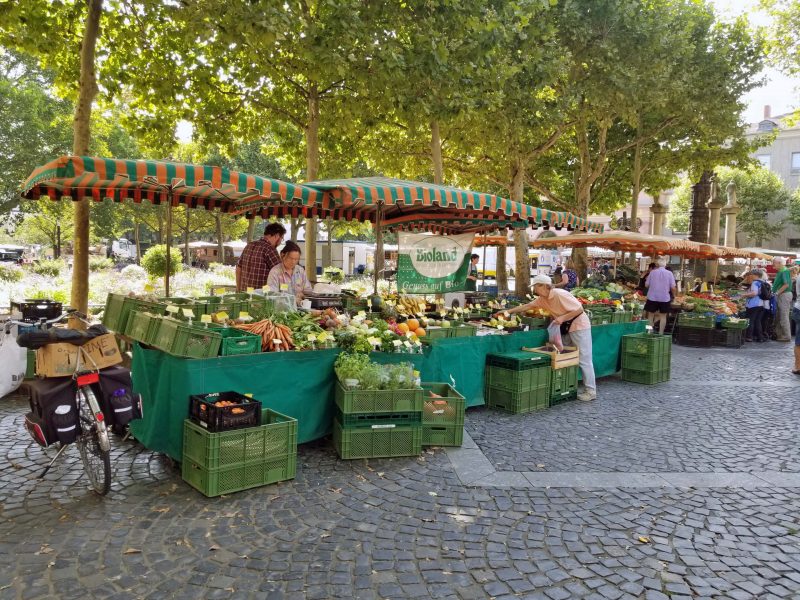
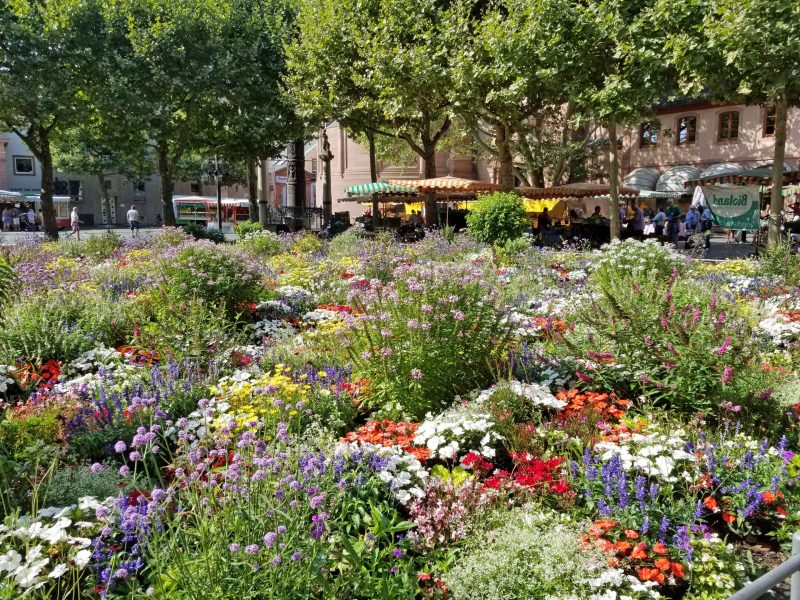

After touring the Old City, we went to the Gutenberg Museum, which was founded in 1900, five hundred years after Gutenberg’s birth. As we all know, Johannes Gutenberg invented movable type, making mechanized book printing possible. He also invented a way to print designs in color to enhance the pages of black print. We toured the museum and were admitted to the room in which three copies of the Gutenberg Bible were on display. (No photos allowed in that room.) Naturally, the docent came in exactly fifteen minutes after we entered and suggested that our guide move on, since the next group was ready to view the display.
We also visited a room in which there was a replica of Johannes Gutenberg’s printing press. The guide explained how it worked and then asked Ted to assist her.
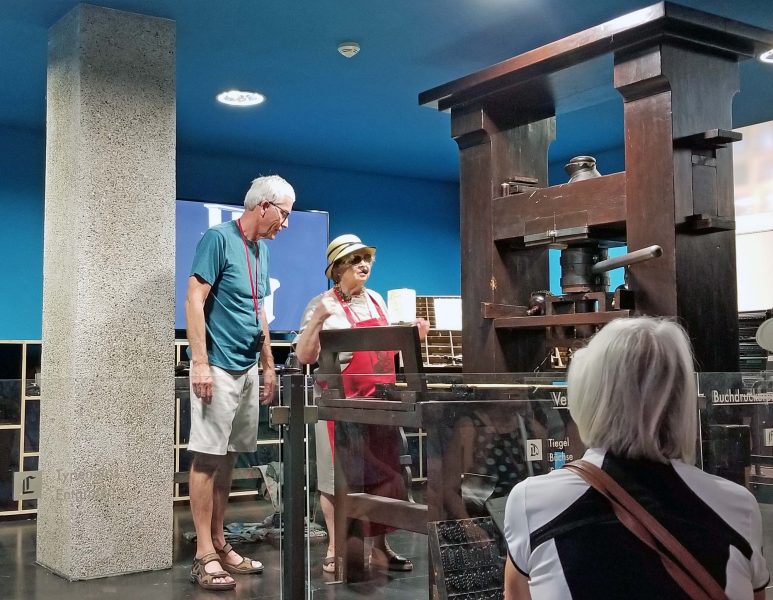

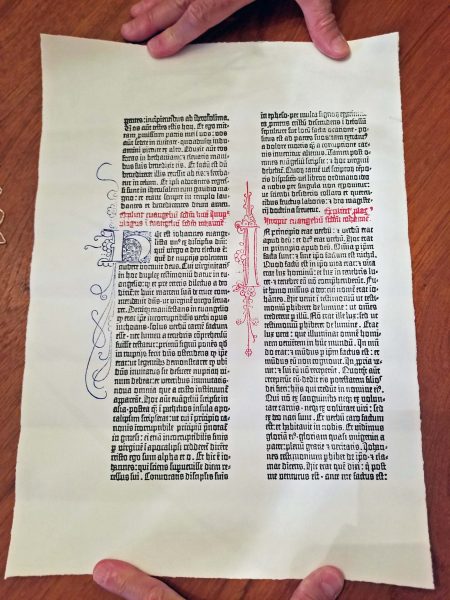
Our guide was good at finding shady places for us to stop while she told us about Mainz, but the high temperature this afternoon was 103 degrees, so it felt good to return to the air-conditioned ship.
Tonight’s lounge game was music trivia. We thought we had a good team put together, with several of us feeling very strong about recognizing songs and artists from a variety of decades. Unfortunately, the questions weren’t that simple. We had to know more detailed things. What does ABBA stand for? What was Freddy Mercury’s real name? Where was CCR from? How many Village People were there? How many actual von Trapp children were there? Teams received extra points if team members danced to the music played for each question, so lots of people danced–including Ted and me. I think I can say with assurance that a good time was had by all.